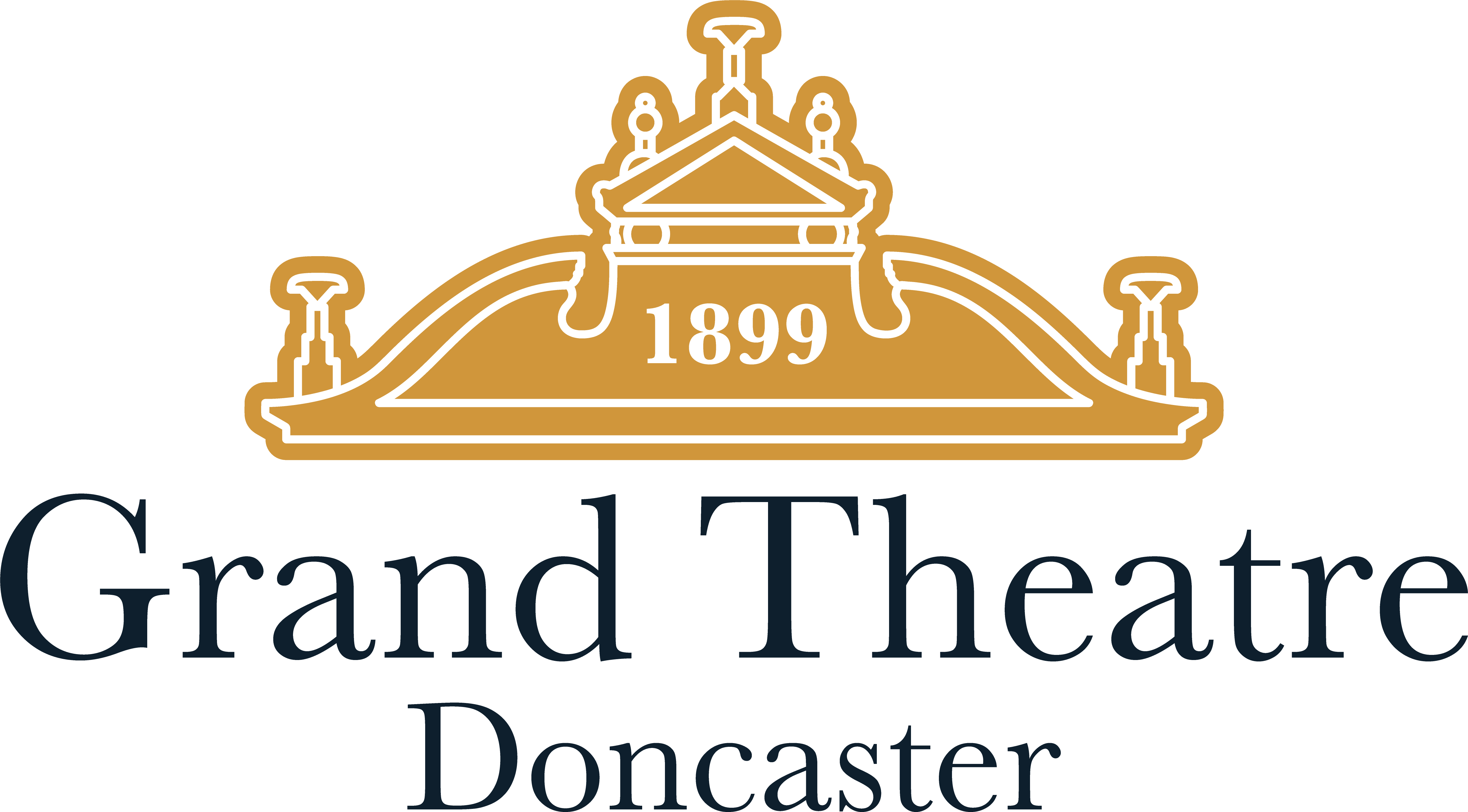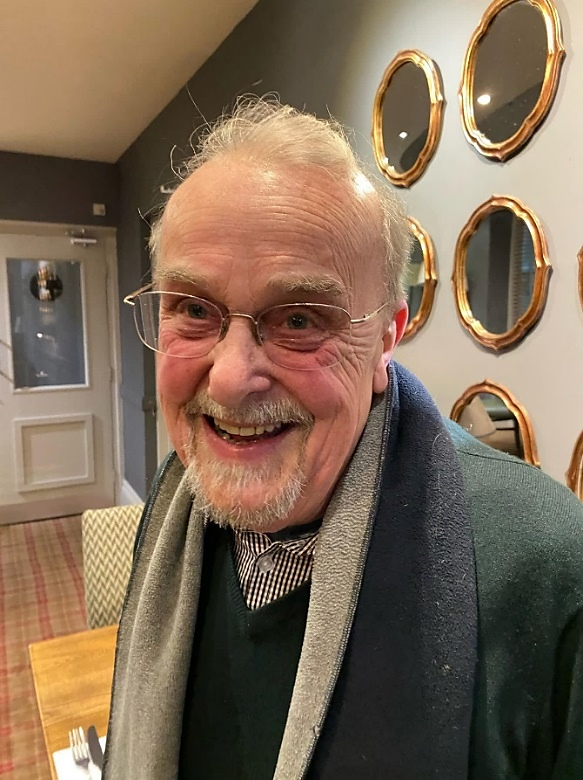‘Learning the ropes’: Colin recalls his work experience at Doncaster Grand Theatre
First taken by his father to Doncaster’s Grand Theatre as an eight-year-old, Colin Hogg was fascinated by how the different parts of the shows he watched came together. By the early 1950s 15-year-old Colin, from Highfields, was ready to learn at first-hand how the performers knew when to go on stage, how the spotlight which picked out performers in the darkness worked, how stage backdrops appeared scene by scene – and more besides.
Plucking up courage, one morning Colin pushed through the theatre’s main entrance in Station Road and asked to speak to the stage manager.
“I asked him if I could help because I was very interested, especially in the backstage work,” said Colin. “He said, ‘Yes, but we can’t pay you because you’re too young.’ I said, ‘I don’t want to get paid, I just want to learn because I’m fascinated by how it all comes together.’
“So I started as a call-boy. I had to go up to the chorus girls’ dressing room and knock on the door and tell them, ‘Ten minutes, girls!’ I got to the top of the circular stairs and knocked on the door.
“‘Ten minutes, girls!’
“‘Can’t hear you – what do you want. We can’t hear you – come in,’ they replied.
“I went in and they were in their underwear!
“‘What do you want to tell us?’ they asked me.
“I was blushing like mad. I’d never seen anything like this before. Then they said, ‘Ten minutes? It’s gone five now hasn’t it – you should have come sooner!’
“I shot back downstairs. The stage manager said, ‘Are you all right, you’re ever so red?’ I couldn’t speak, I was absolutely knocked out!”
Undeterred by his eye-opening encounter, Colin’s work experience at the Grand Theatre soon settled down and he began to make friends and ‘learn the ropes’.
“Working backstage l learnt about ‘sliding the flats’ – that was the name given to scenery backcloths and we would slide them on stage for the next scene,” he says. “‘Flying the flats into the flies’, I found out, meant pulling up a scenery backcloth into the fly-tower and securing the ropes. We had a list of which fly to drop when and we would tie the ropes so the scenery was two inches above the stage.”
Shows at the Grand Theatre would usually end by 10pm, Colin says, and if it was the last night, it was all hands on stage, as he explains.
“We called it ‘get-outs’. If the show was due to open at another theatre we had to gather all the production materials on to the stage, roll up the scenery and then take it along to Doncaster railway station. In those days there was a railway siding so when the train came in, we would load the entire show and away it would go to its next performance.
“‘Get-ins’ meant a new show would arrive, by train, and we would collect the scenery and props from Doncaster railway station and take it back to the theatre. One night, a ‘get-in’ train was very late arriving from Rotherham. We collected the scenery and brought it back to the Grand Theatre. But by the time I got home to Highfields it was at 6am!
“I was taught how to operate the spotlight from up in the gods. In those day the spotlight was two pieces of carbon which conducted electricity. A bright spark across the carbon tips created the light, but you had to keep your eyes on the carbons because if the gap grew too large the spark went out. So if you had a lady dancing on the stage and the light went out you were in trouble!
“There was a little inspection window on the spotlight casing so you could keep your eye on it. But I forgot to close it. One night everything was going fine and after the show I went back downstairs to see the stage manager. He said, ‘Where on earth have you been?’ I realised I was covered in white powder which was the residue of the two carbons.”
Colin recollects some of the performers at Doncaster Grand Theatre he became friendly with during his two years’ work experience.
“There was Billy Thorburn, a pianist and band leader. Jamaican-born Chester Harriott was a gifted piano player and his son is the chef Ainsley Harriott. There was Albert Modley, a comedian and entertainer from Bradford.
“Among the theatre employees, Ossie was the commissionaire on the doors. He was a First World War veteran and wore his miniature war medals on his official uniform with pride. He walked with a limp but that didn’t stop him putting up all the large show posters around town. He would set off on his bicycle with a paste bucket and he mounted the large display posters around Doncaster. He was an unbelievable chap.
“If I was late for work I would come in through the main door and nip down the side corridor. But if Ossie saw me he would say, ‘You’re late!’ and he’d give me a ‘clip round the ear hole’ – it was accepted in those days!”
Now a member of the Friends of Doncaster Grand Theatre committee, Colin uses his memories of the Grand in its heyday to imagine what the reopened theatre would bring to the people of Doncaster, the city’s cultural life and the local economy.
“Reopening Doncaster Grand Theatre would have wide-ranging benefits, I firmly believe,” Colin says. “There’s the history of the building which is being captured through an oral history project. For the arts it would be an outlet for schools, colleges and arts associations which would be drawn to the building to rehearse and perform.
“The theatre is perfectly positioned close to the railway station in the heart of the city centre which means the footfall would be great. I really think for the Grand Theatre, the sky’s the limit!”
Plucking up courage, one morning Colin pushed through the theatre’s main entrance in Station Road and asked to speak to the stage manager.
“I asked him if I could help because I was very interested, especially in the backstage work,” said Colin. “He said, ‘Yes, but we can’t pay you because you’re too young.’ I said, ‘I don’t want to get paid, I just want to learn because I’m fascinated by how it all comes together.’
“So I started as a call-boy. I had to go up to the chorus girls’ dressing room and knock on the door and tell them, ‘Ten minutes, girls!’ I got to the top of the circular stairs and knocked on the door.
“‘Ten minutes, girls!’
“‘Can’t hear you – what do you want. We can’t hear you – come in,’ they replied.
“I went in and they were in their underwear!
“‘What do you want to tell us?’ they asked me.
“I was blushing like mad. I’d never seen anything like this before. Then they said, ‘Ten minutes? It’s gone five now hasn’t it – you should have come sooner!’
“I shot back downstairs. The stage manager said, ‘Are you all right, you’re ever so red?’ I couldn’t speak, I was absolutely knocked out!”
Undeterred by his eye-opening encounter, Colin’s work experience at the Grand Theatre soon settled down and he began to make friends and ‘learn the ropes’.
“Working backstage l learnt about ‘sliding the flats’ – that was the name given to scenery backcloths and we would slide them on stage for the next scene,” he says. “‘Flying the flats into the flies’, I found out, meant pulling up a scenery backcloth into the fly-tower and securing the ropes. We had a list of which fly to drop when and we would tie the ropes so the scenery was two inches above the stage.”
Shows at the Grand Theatre would usually end by 10pm, Colin says, and if it was the last night, it was all hands on stage, as he explains.
“We called it ‘get-outs’. If the show was due to open at another theatre we had to gather all the production materials on to the stage, roll up the scenery and then take it along to Doncaster railway station. In those days there was a railway siding so when the train came in, we would load the entire show and away it would go to its next performance.
“‘Get-ins’ meant a new show would arrive, by train, and we would collect the scenery and props from Doncaster railway station and take it back to the theatre. One night, a ‘get-in’ train was very late arriving from Rotherham. We collected the scenery and brought it back to the Grand Theatre. But by the time I got home to Highfields it was at 6am!
“I was taught how to operate the spotlight from up in the gods. In those day the spotlight was two pieces of carbon which conducted electricity. A bright spark across the carbon tips created the light, but you had to keep your eyes on the carbons because if the gap grew too large the spark went out. So if you had a lady dancing on the stage and the light went out you were in trouble!
“There was a little inspection window on the spotlight casing so you could keep your eye on it. But I forgot to close it. One night everything was going fine and after the show I went back downstairs to see the stage manager. He said, ‘Where on earth have you been?’ I realised I was covered in white powder which was the residue of the two carbons.”
Colin recollects some of the performers at Doncaster Grand Theatre he became friendly with during his two years’ work experience.
“There was Billy Thorburn, a pianist and band leader. Jamaican-born Chester Harriott was a gifted piano player and his son is the chef Ainsley Harriott. There was Albert Modley, a comedian and entertainer from Bradford.
“Among the theatre employees, Ossie was the commissionaire on the doors. He was a First World War veteran and wore his miniature war medals on his official uniform with pride. He walked with a limp but that didn’t stop him putting up all the large show posters around town. He would set off on his bicycle with a paste bucket and he mounted the large display posters around Doncaster. He was an unbelievable chap.
“If I was late for work I would come in through the main door and nip down the side corridor. But if Ossie saw me he would say, ‘You’re late!’ and he’d give me a ‘clip round the ear hole’ – it was accepted in those days!”
Now a member of the Friends of Doncaster Grand Theatre committee, Colin uses his memories of the Grand in its heyday to imagine what the reopened theatre would bring to the people of Doncaster, the city’s cultural life and the local economy.
“Reopening Doncaster Grand Theatre would have wide-ranging benefits, I firmly believe,” Colin says. “There’s the history of the building which is being captured through an oral history project. For the arts it would be an outlet for schools, colleges and arts associations which would be drawn to the building to rehearse and perform.
“The theatre is perfectly positioned close to the railway station in the heart of the city centre which means the footfall would be great. I really think for the Grand Theatre, the sky’s the limit!”

